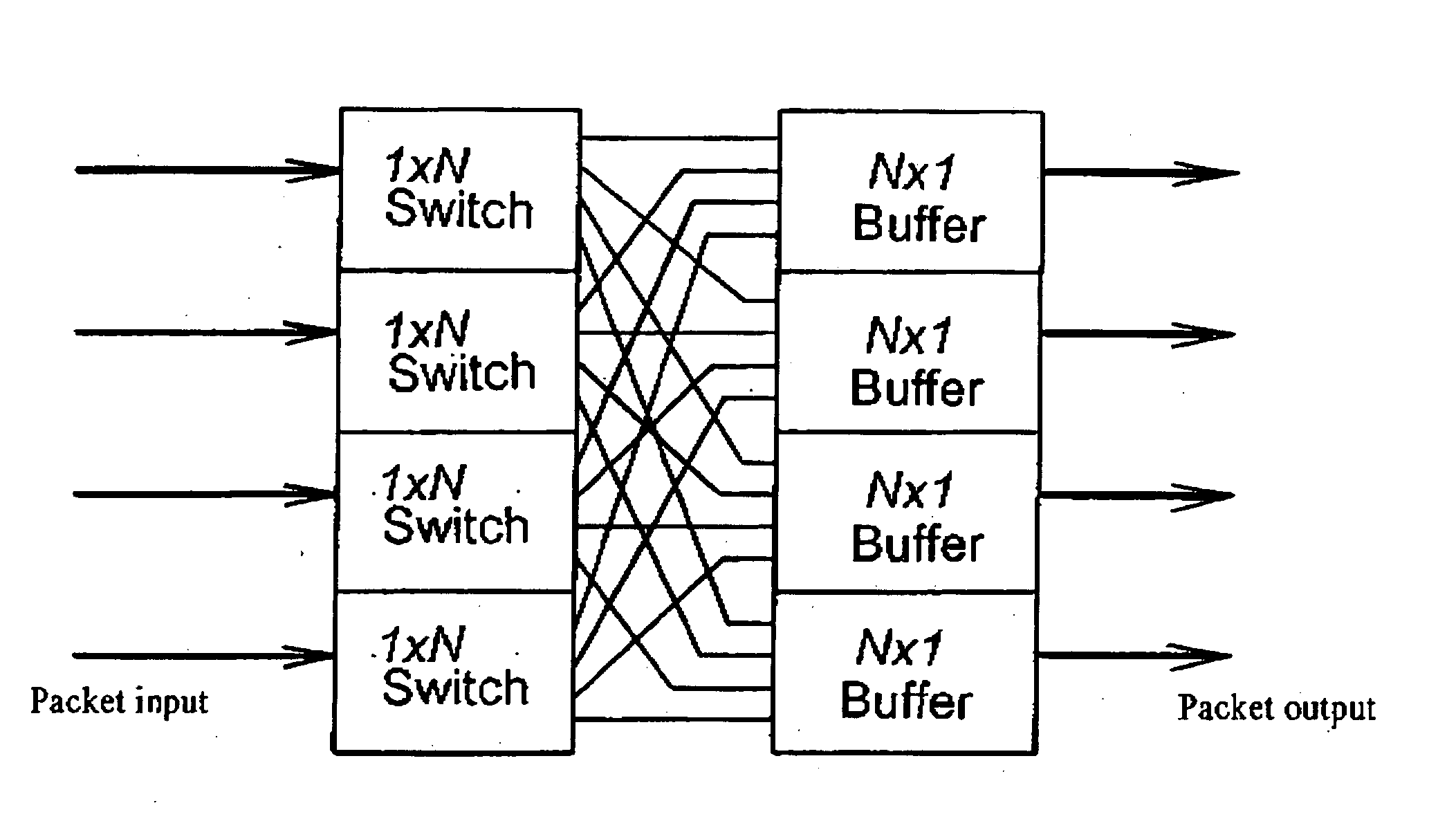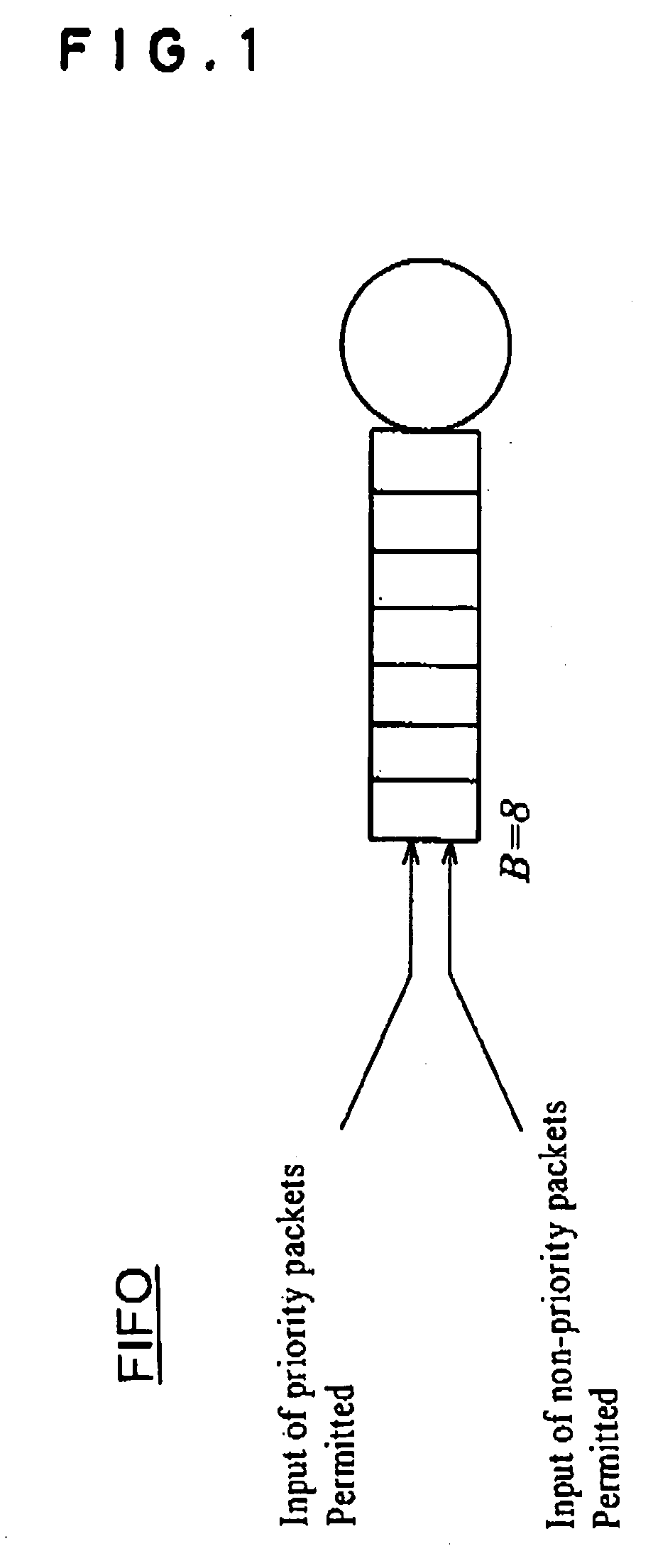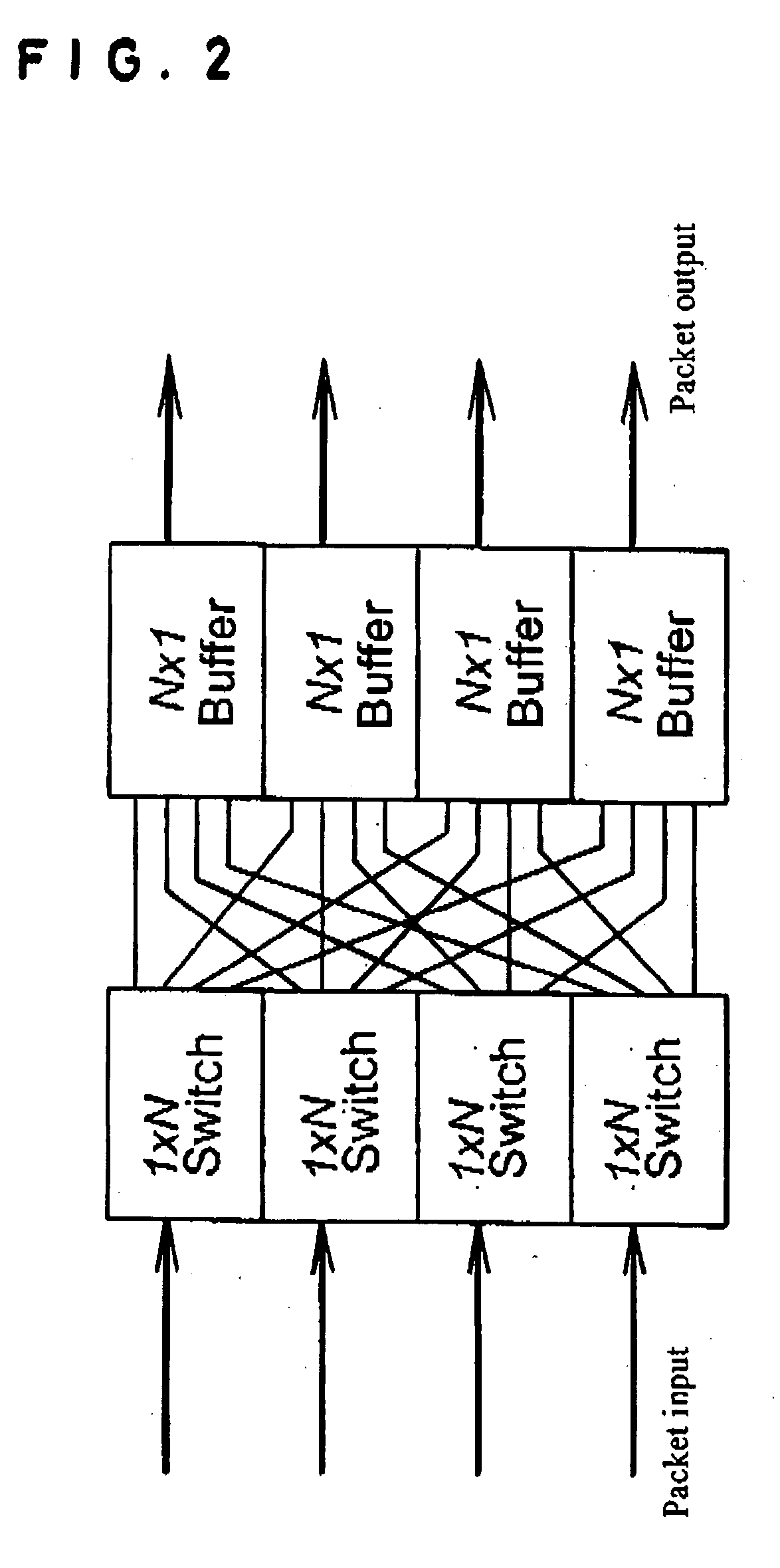Optical packet buffering device and buffering method thereof
a buffering device and optical packet technology, applied in data switching networks, multiplex communication, digital transmission, etc., can solve the problems of limited buffering speed, increased size of optical elements, and inability to use practicable optical logic circuits, so as to increase data processing speed and simplify calculation and implementation in hardware.
- Summary
- Abstract
- Description
- Claims
- Application Information
AI Technical Summary
Benefits of technology
Problems solved by technology
Method used
Image
Examples
example 1
The main point of the present invention is to determine the delay times for as many packets as possible per time unit. To this end, a large number of processors Pij are disposed as shown in FIG. 13 to perform the processing required to determine the delay times in parallel. Here, Pij refers to the processor provided on the ith stage of the jth lightpath. In order to be particularly clear, Pij may be represented as P(i,j).
In FIG. 13, the length l (L) of the optical packet signals of the eight lightpaths from IN1 to IN8 and the interval (packet pre-period) t from the optical packet signal to the clock signal are used to perform coordination so that the percentage of optical packets discarded is minimized. In this case also, delay elements that are arranged with equal differences between their delay times are shown, and the Δn serving as the output is shown as a coefficient of the base delay time of D. In FIG. 13, the circles indicate processors and the squares are registers R. Here...
example 2
In order to perform the processing of the flowcharts above at high speed, it is preferably implemented in semiconductor circuits (hardware). However, in order to implement it in hardware, the processing procedure must be described in hardware description language (HDL) and converted to circuitry, but the function (max) that finds the maximum value is used in Table 6 above, yet this operate cannot be used in the current state. In addition, division is used in the above processing procedure and this may complicate the circuitry, or cause the processing to slow down, among other problems. These problems are solved by setting T=2pD (where p is an integer).
In this case, the first-stage processors P1n perform processing according to the flowchart shown in FIG. 21. If this processing were written in the form of a program, it would be as follows.
TABLE 8First Stage (P1n: 1≦n≦8)ln , ln−1: packet lengthtn , tn−1: arrival gap timegn−1: temporary variable for queue lengthfn,1 , tn,1 : outpu...
example 3
When the above buffering device in the optical packet switch for asynchronous variable-length optical packets is used for buffering in an optical packet switch for synchronous fixed-length optical packets, the parallel processing of FIG. 26 can be simplified to give the constitution of FIG. 27. Similarly, in the same manner as the constitution illustrated in FIG. 13, with the constitution using the dotted-line portion that sequentially sends data forward, the variables can be set to those of synchronous fixed-length to give the constitution of FIG. 28. In FIGS. 27 and 28, the number of variables used in processing is reduced. The number of variables can be reduced because all of the optical packet lengths become identical, so it is possible to use the number of optical packets instead of the optical packet length in the above process. In addition, the respective optical packets are synchronized, so the processing of the pre-period of optical packets can be omitted. The processing t...
PUM
 Login to View More
Login to View More Abstract
Description
Claims
Application Information
 Login to View More
Login to View More - R&D
- Intellectual Property
- Life Sciences
- Materials
- Tech Scout
- Unparalleled Data Quality
- Higher Quality Content
- 60% Fewer Hallucinations
Browse by: Latest US Patents, China's latest patents, Technical Efficacy Thesaurus, Application Domain, Technology Topic, Popular Technical Reports.
© 2025 PatSnap. All rights reserved.Legal|Privacy policy|Modern Slavery Act Transparency Statement|Sitemap|About US| Contact US: help@patsnap.com



